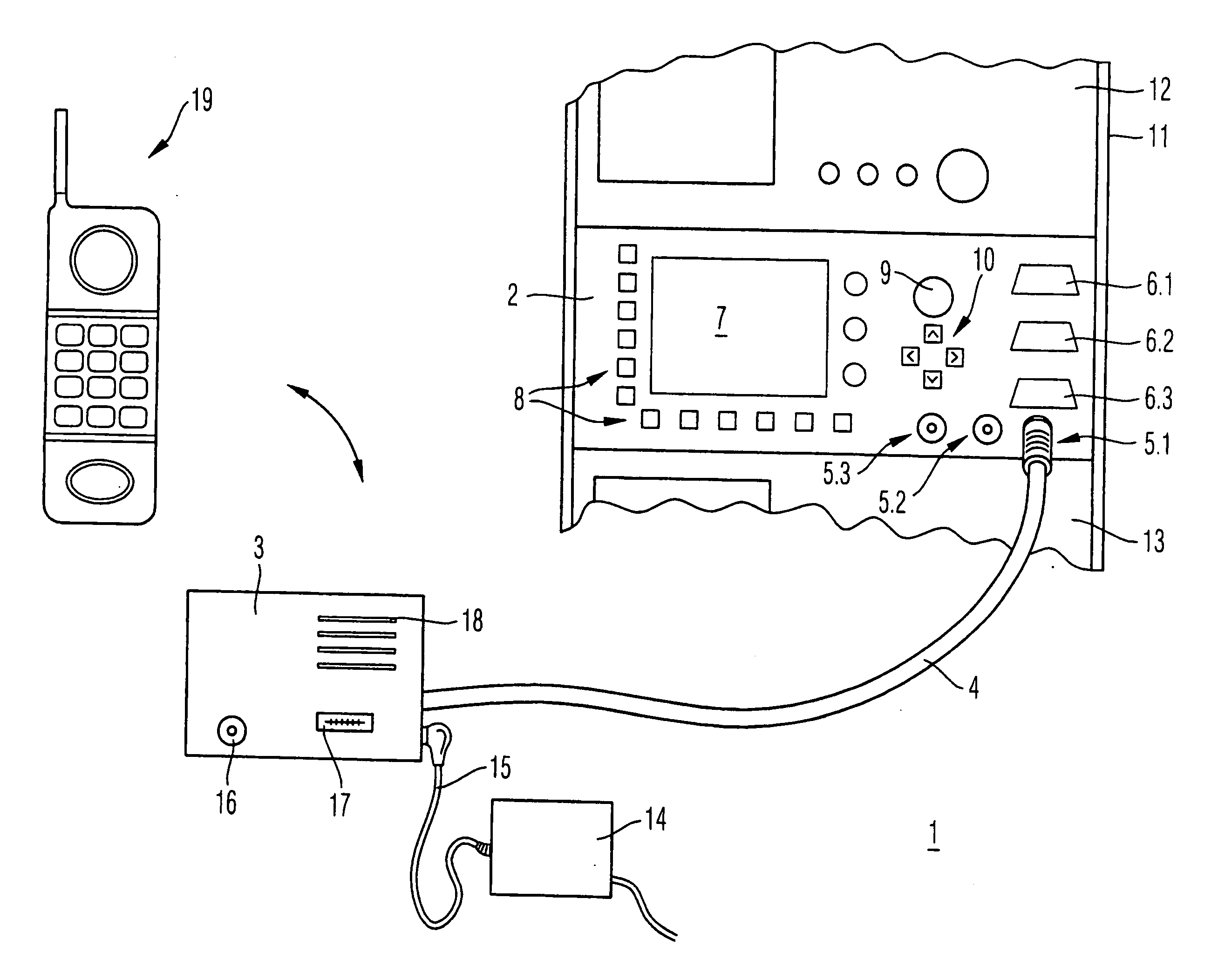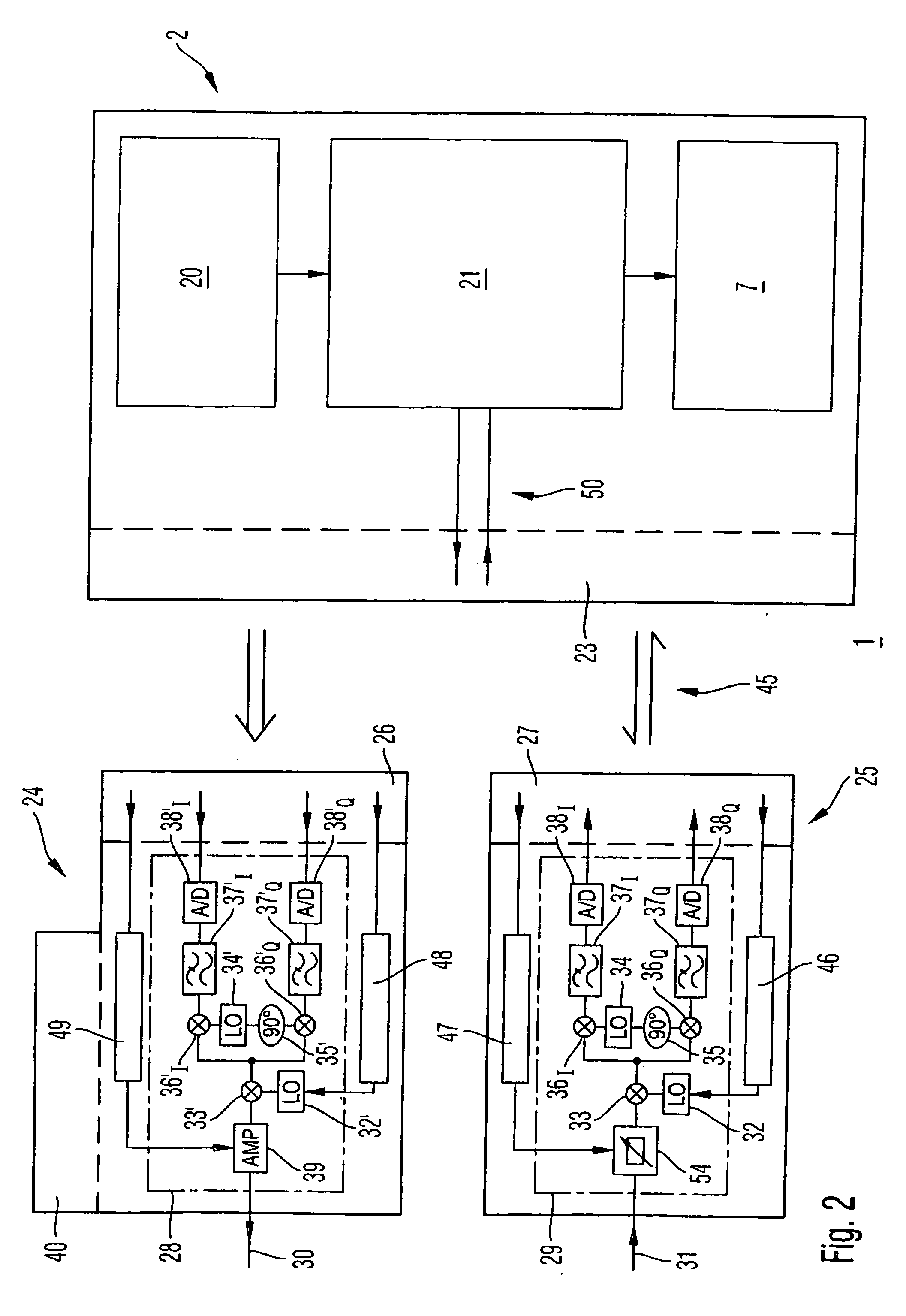High-frequency measuring system having spatially separated high-frequency modules
- Summary
- Abstract
- Description
- Claims
- Application Information
AI Technical Summary
Benefits of technology
Problems solved by technology
Method used
Image
Examples
Embodiment Construction
[0022] A measuring system 1 consistent with the invention, as illustrated in FIG. 1, comprises a measuring-device unit 2, which is connected, in the exemplary embodiment shown, to only one high-frequency module 3. The high-frequency module 3 is connected to the measuring-device unit 2 via a connecting cable 4, the high-frequency module 3 being connected to a first socket 5.1 by means of the connecting cable 4. A second socket 5.2 and a third socket 5.3, which are identical, for example in their structure, to the first socket 5.1, are provided on the measuring-device unit 2.
[0023] In the illustrated exemplary embodiment, the measuring-device unit 2 provides three further connecting options 6.1, 6.2 and 6.3 for high-frequency modules, thereby providing, for example, an alternative connecting option to the three sockets 5.1, 5.2 and 5.3. For instance, the three sockets 5.1, 5.2 and 5.3 can form a serial, optical interface, while the three connecting options 6.1 to 6.3 can realize a pa...
PUM
 Login to View More
Login to View More Abstract
Description
Claims
Application Information
 Login to View More
Login to View More - R&D
- Intellectual Property
- Life Sciences
- Materials
- Tech Scout
- Unparalleled Data Quality
- Higher Quality Content
- 60% Fewer Hallucinations
Browse by: Latest US Patents, China's latest patents, Technical Efficacy Thesaurus, Application Domain, Technology Topic, Popular Technical Reports.
© 2025 PatSnap. All rights reserved.Legal|Privacy policy|Modern Slavery Act Transparency Statement|Sitemap|About US| Contact US: help@patsnap.com



